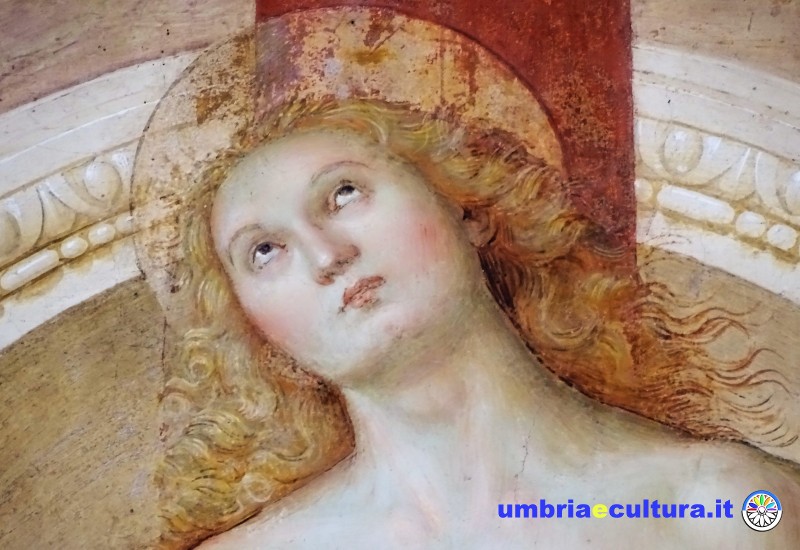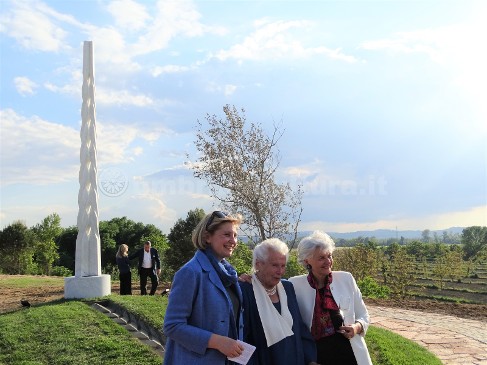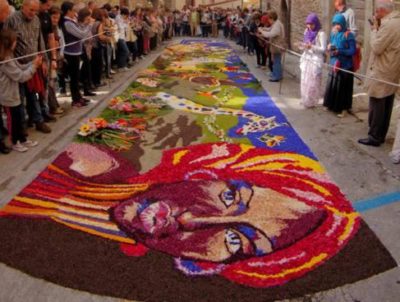From the top of the amazing village of Panicale it’s possible to enjoy a wonderful view of Trasimeno Lake , the same landscape of Perugino’s paintings.
The landscape element, in Perugino paintings, achieves the dignity of an essential element of the work, an element that contributes, with its presence, to express the mood of the artwork.
The wonder of this place is the opportunity to admire the splendid landscape and to find it, essentially intact, in the fresco by the Perugino, called the Divine Painter, inside the Oratory of San Sebastiano.
The martyrdom of San Sebastiano, pierced by numerous arrows, is the main subject of the work. San Sebastiano, represented in the moment of martyrdom, despite the dramatic nature of the scene, communicates a state of absolute serenity. Tied to the column on a pedestal bearing the author’s signature, San Sebastiano is at the center of the scene in front of a classic architecture that allows us to glimpse the pleasant surrounding landscape through the arches. The four torturers, in plastic poses, are intent on their work while God the Father, from above, depicted with a very common iconography, is surrounded by seven seraphim and two great angels.
By carefully observing the precious fresco, it is possible to grasp the details that tell the story through the centuries: from the carbon dots of the preparatory dusting to the small additions made during the last restoration.
The small oratory also contains, inside, a fresco detached from the former church of Sant’Agostino (now home to the Tulle Museum), not in excellent condition, depicting the Madonna and Child among four musician angels, Sant’Agostino and Santa Maria Maddalena. After being attributed to Perugino and then to Giovanni Spagna, now for this very valuable work, a possible attribution has even been aired to Raphael.
The single ticket Le Terre del Perugino, which combines in one route the villages of Città della Pieve, Panicale, Paciano and Piegaro, in Panicale gives access to the Oratorio di San Sebastiano, the Caporali Theater, the Tulle Museum, where it is possible to admire precious examples of Ars Panicalensis, or embroidery on tulle, and at the Museum of the Madonna della Sbarra.
Benedetta Tintillini
Find Panicale on Google Maps:



